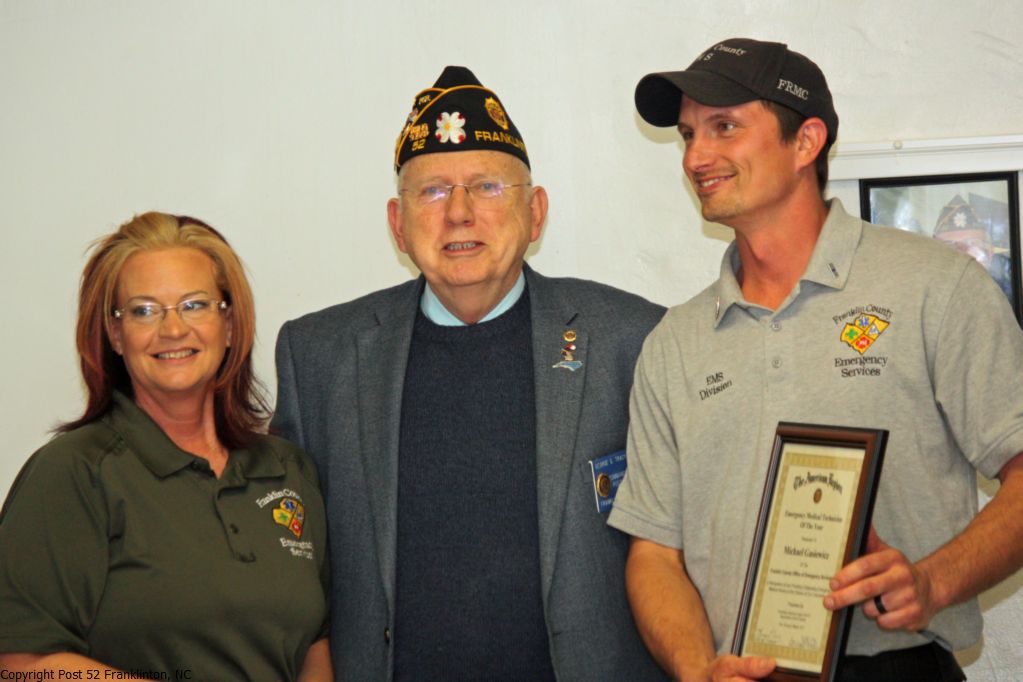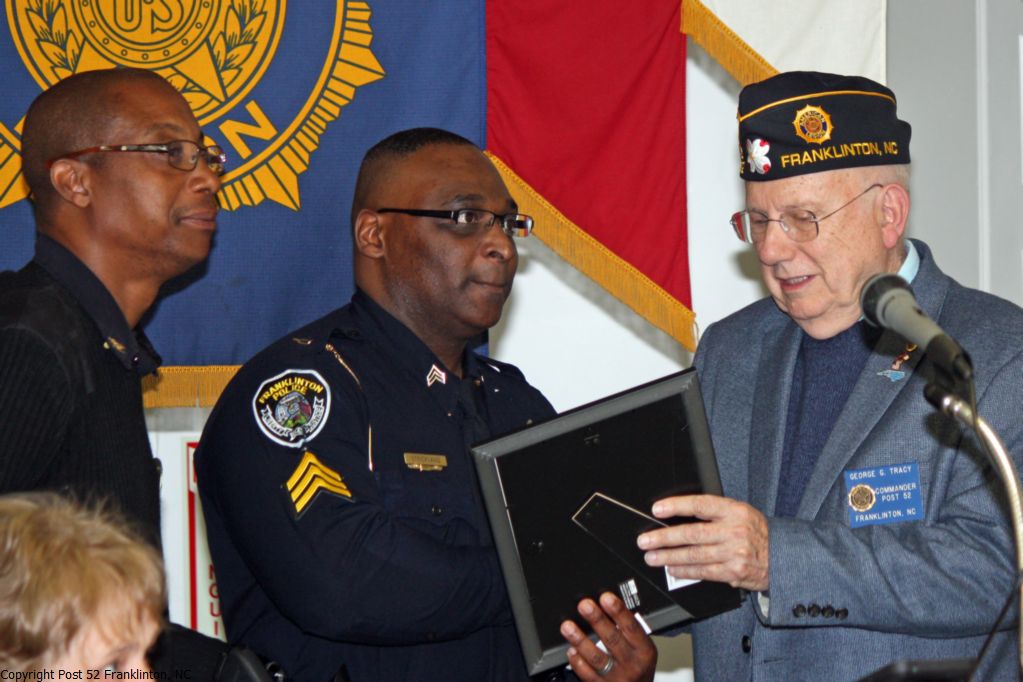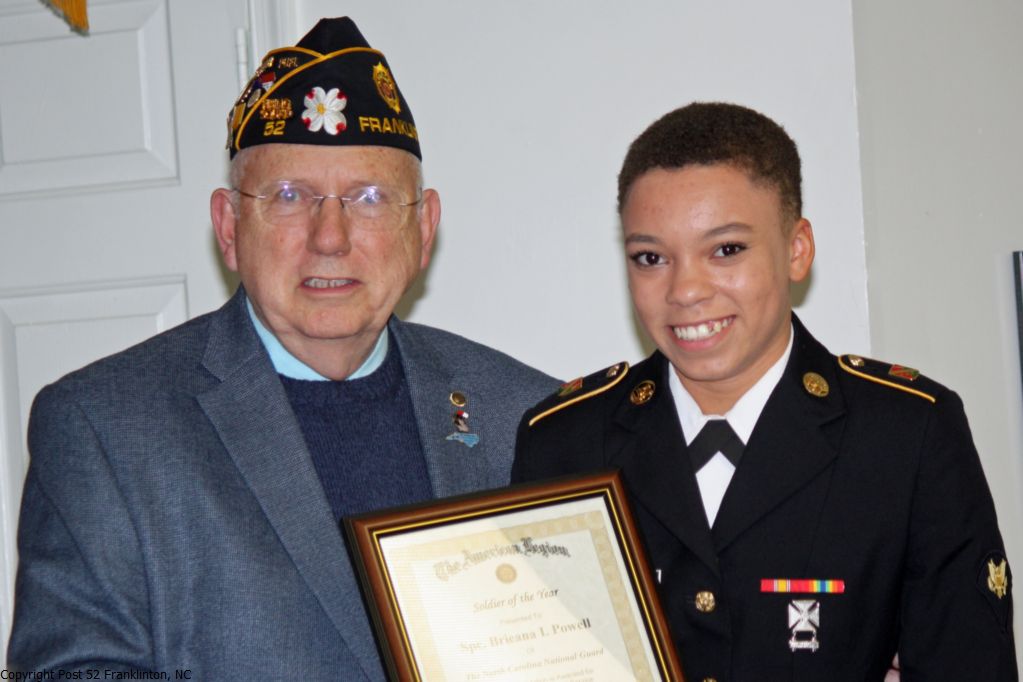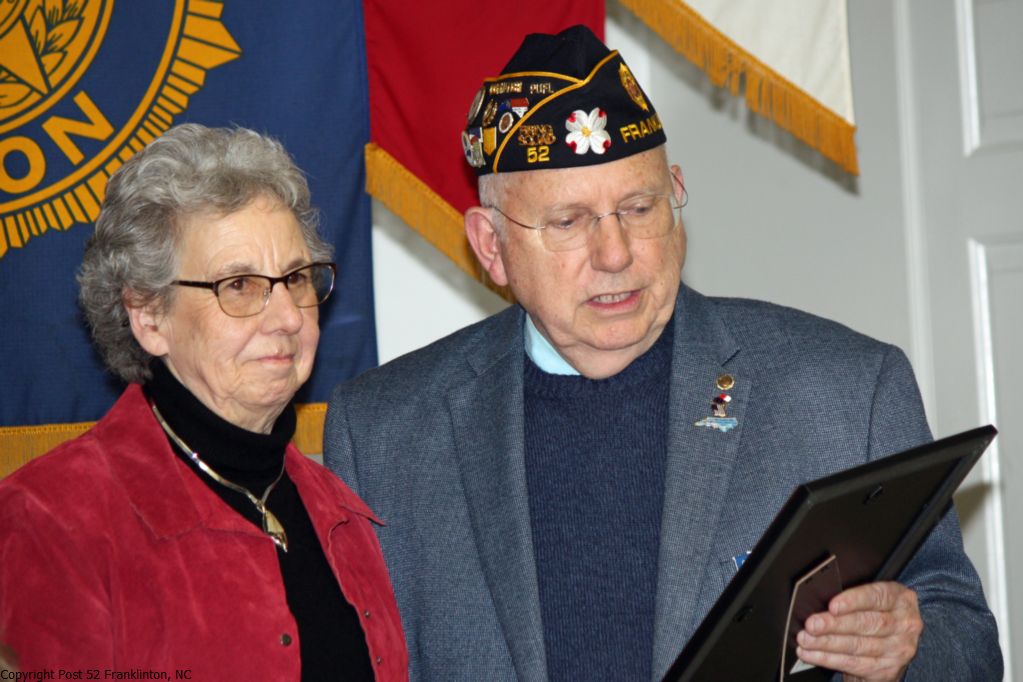Awards
Post 52 is proud to support many of the programs that the American Legion sponsors. Each year, we celebrate the birthday of the American League (which was established March 15, 1919) with a banquet to recognize the sacrifices of those on our home front. These are people who, through their unselfish service to our Community and Country, have contributed to our quality of life. We do this by recognizing one individual from Fire, Law Enforcement, Emergency Medical Services, as well as others, for their out-standing support to our community. This years recipients are listed below.
EMS Commendation

Missy Johnson, Chief Compliance Officer for Franklin County Emergency Services and Commander George Tracy presenting the Emergency Medical Services Certificate of Commendation to Michael Gasiewicz, Lieutenant Field Training Officer.
Fireman Commendation

Commander George Tracy presenting Fireman, Steward Goswick of the Franklinton Fire Department with the Fireman Certificate of Commendation.
Law Enforcement Commendation

Left to Right are, Franklinton Police Chief, John Green with Sgt. Gregory "Tim" Strickland, of the Franklinton Police Department who is receiving the Law Enforcement Certificate of Commendation from Commander Tracy. Tim is a member of Post 52, having spent 4 years in the US Marines during the Gulf War.
NCO of the Year Commendation

SPC Brieana I. Powell of the Louisburg National Guard was the NCO of the Year. She received her Certificate of Commendation from Commander Tracy. Brieana is working on her BA in Physical Education and has as her goal to have her degree by June 2019. Good luck and keep up the good work.
Community Service Commendation

Dr. Peggy McGhee was chosen as the recipient of our Community Service certificate for her many years of work with children of Franklin County. The wording on her certificate says it all - "In recognition and sincere appreciation for your dedicated service to our community through your years in educating the youth of Franklin County as a teacher, reading specialist, and administrator, including Superintendent of the Franklinton City Schools. You did not stop educating our youth after retirement but planed, organized, and executed "Colonial Days" at your homestead for the fourth grade students of Franklin County. Through this project, students are shown live activities of how our colonial ancestors lived their day to day lives." Thank you for all that you.
Post 52 Legionnaire of the Year

Joseph "Joe" Dillehay, Post 52 Second Sargeant at Arms, received the 2017 Post 52 Legionnaire of the Year Award from Commander Tracy.
Post 52 Commander's Special Recognition

As we approach our 100th Birthday, we as a Post are blessed to have many years of experience residing in our membership. The Executive Committee decided to honor legionnaires with 40 or more years of contiguous years of membership. That turned out to be 10% of our members or 1074 years of service. Pictured above are three who excepted our invitation. L to R are: William C. "Bill" Hagwood, US Navy, Korea, Past Post Historian with 50 years; Samuel B. "Brodie" Green, US Air Force, Korea, Past Post Finance Officer with 52 years; and Howell L. Jones, US Army, Korea, Past Post Commander with 63 years. All three are
Photos

To see additional photos of the Banquet click here.
